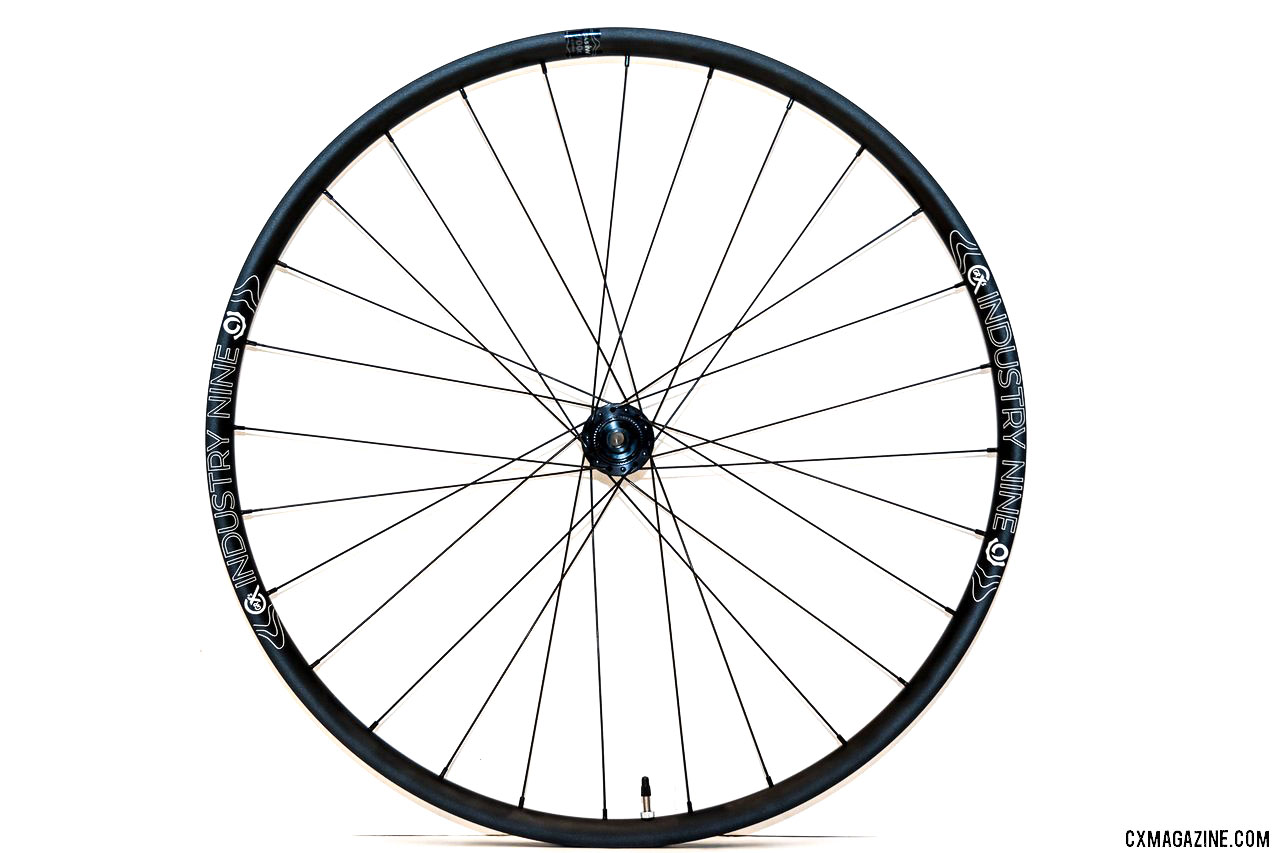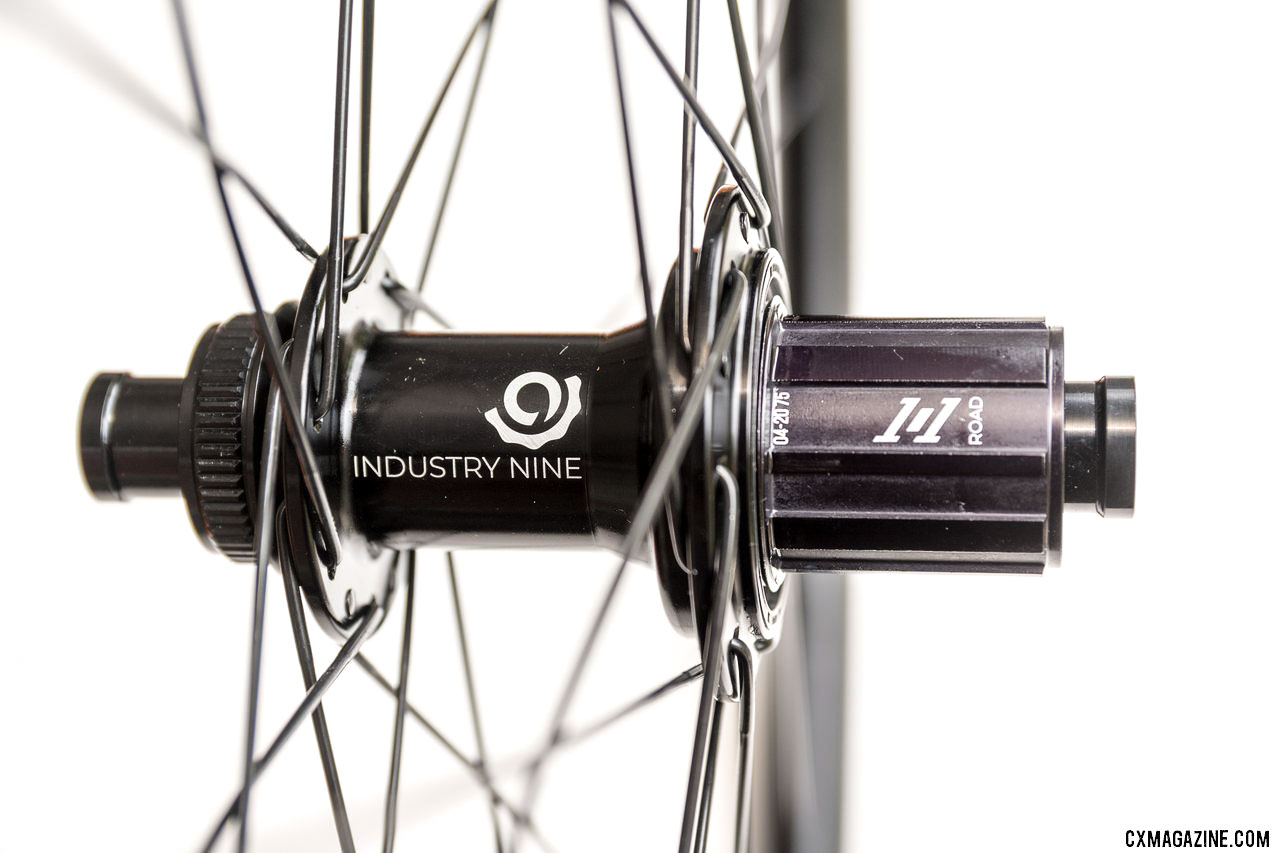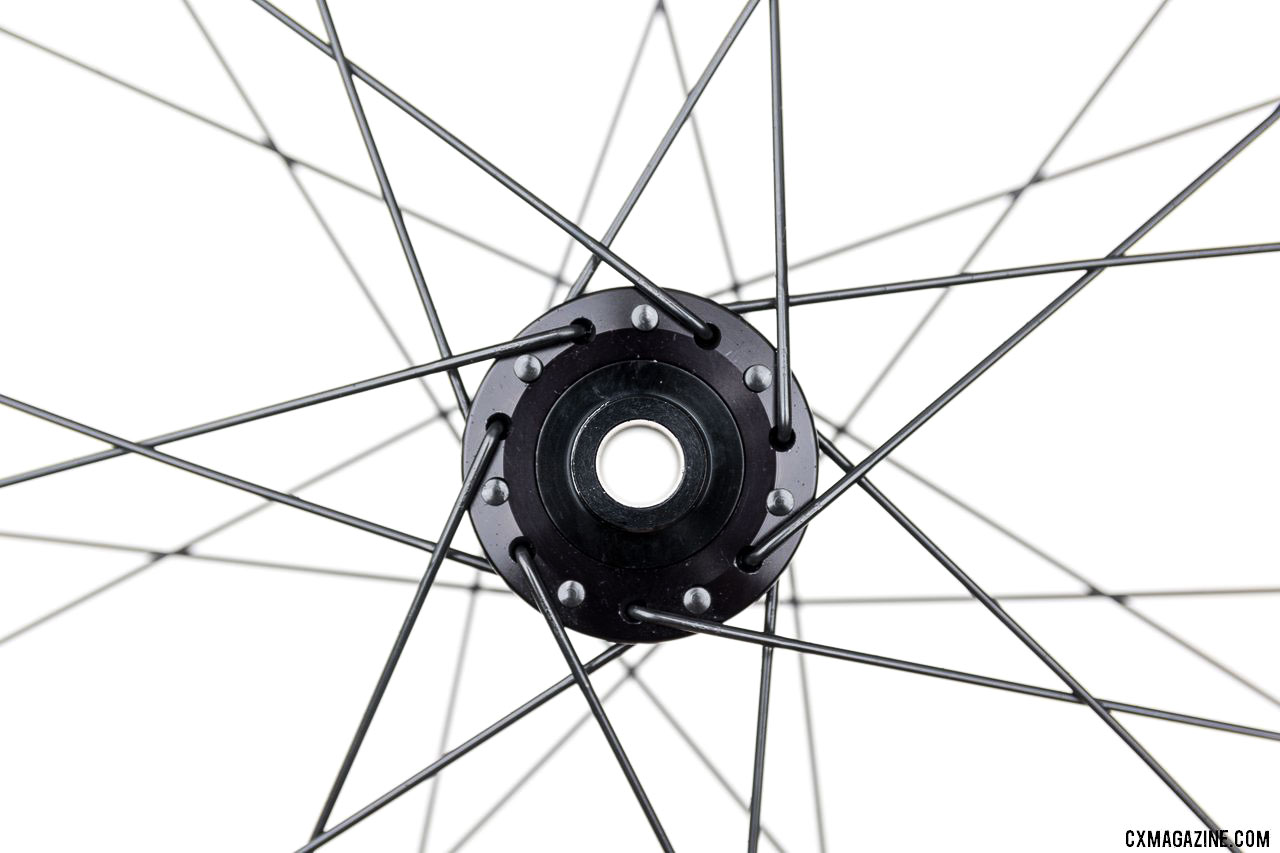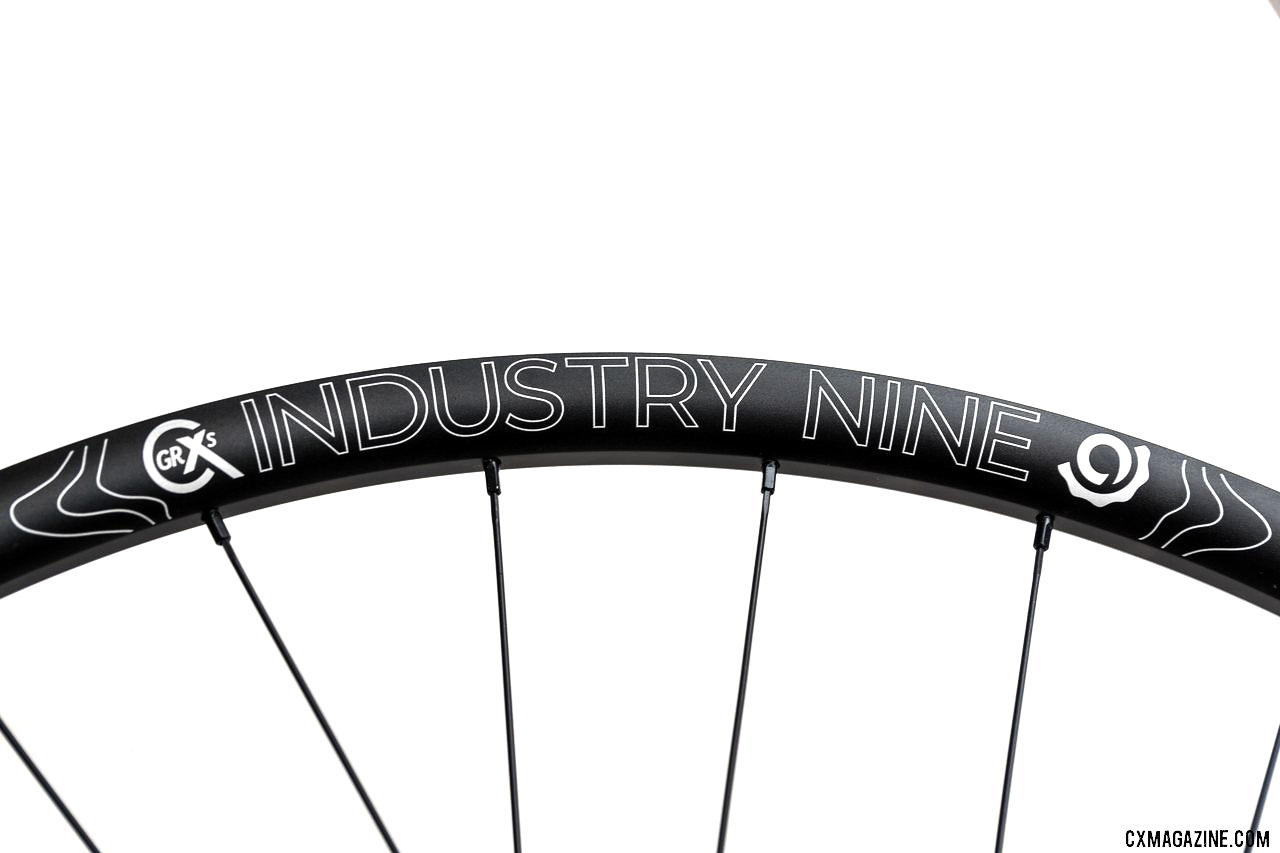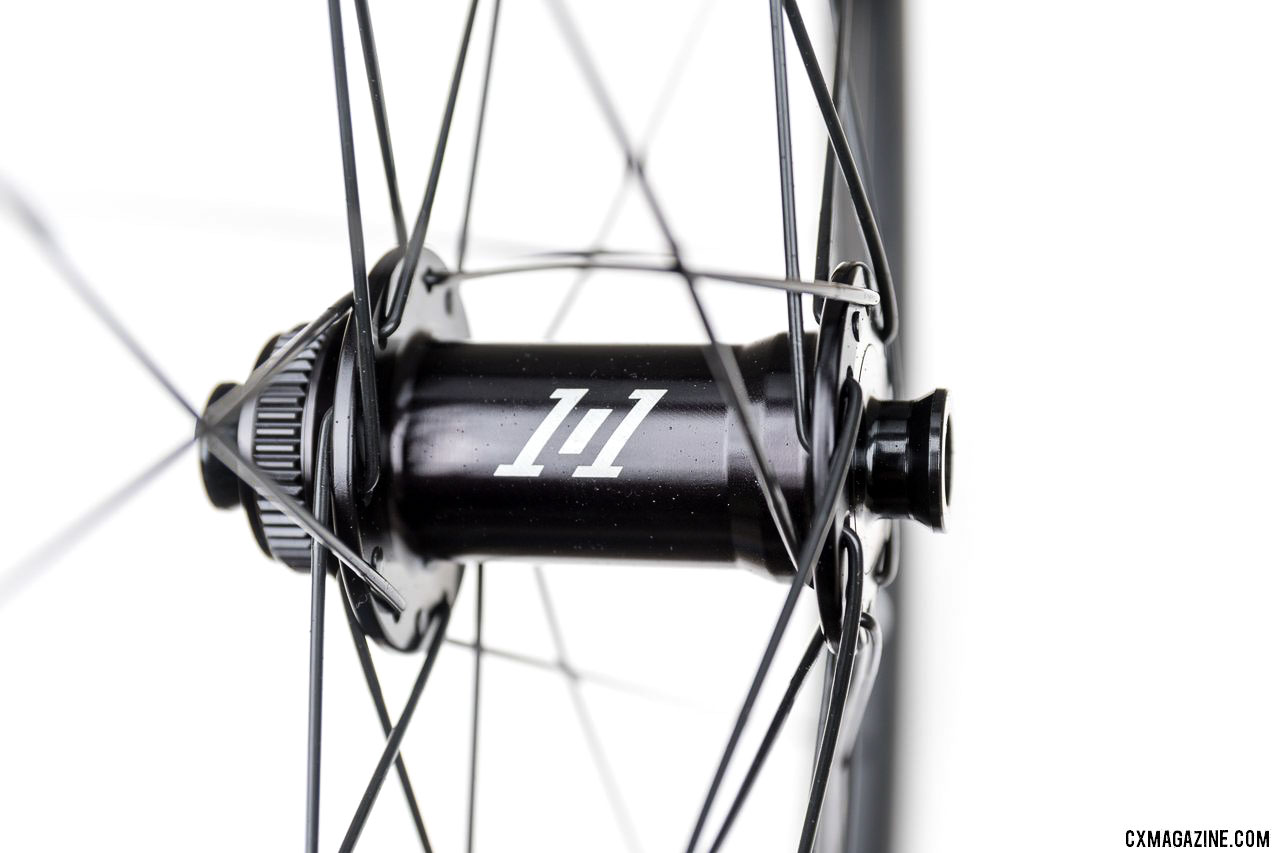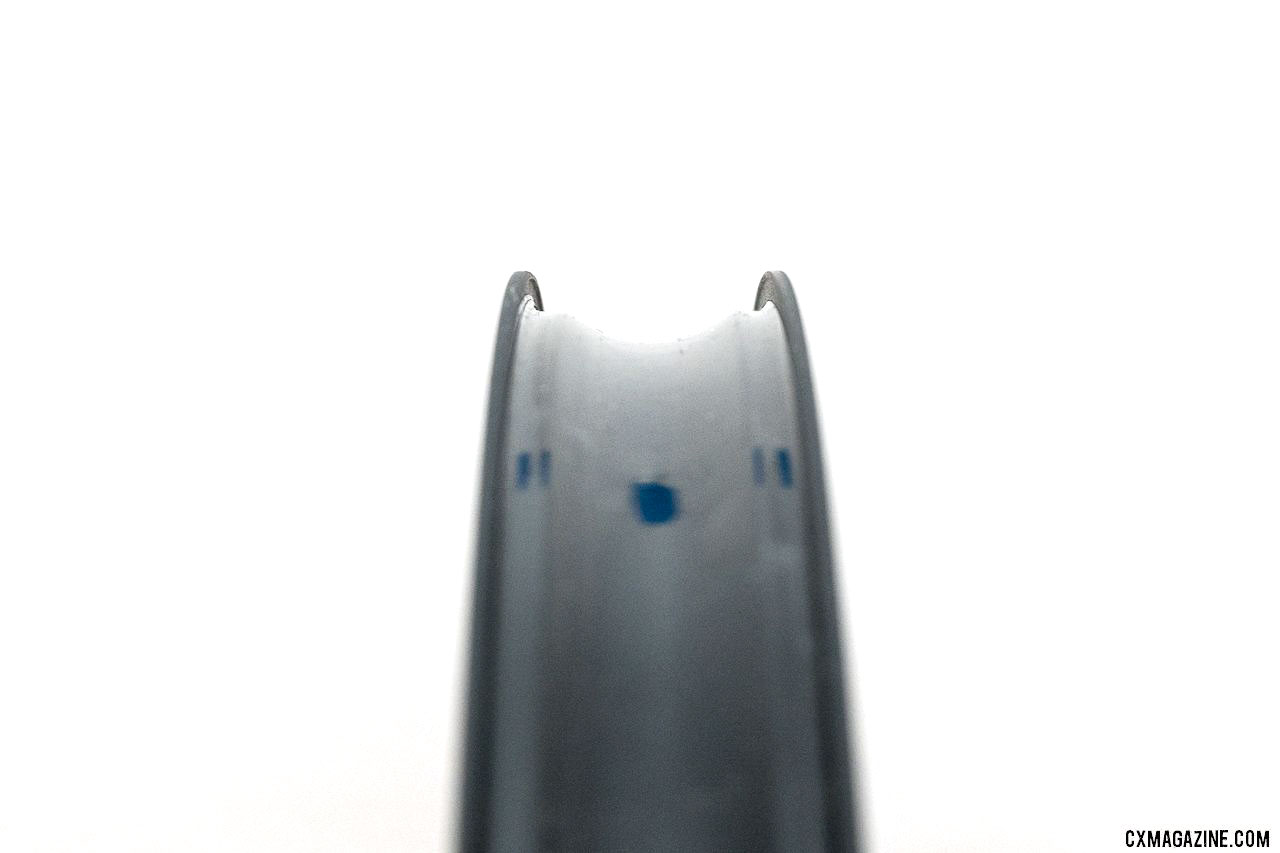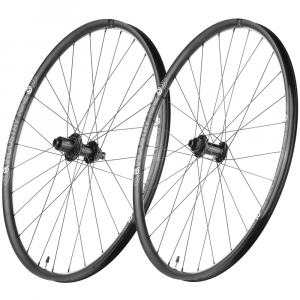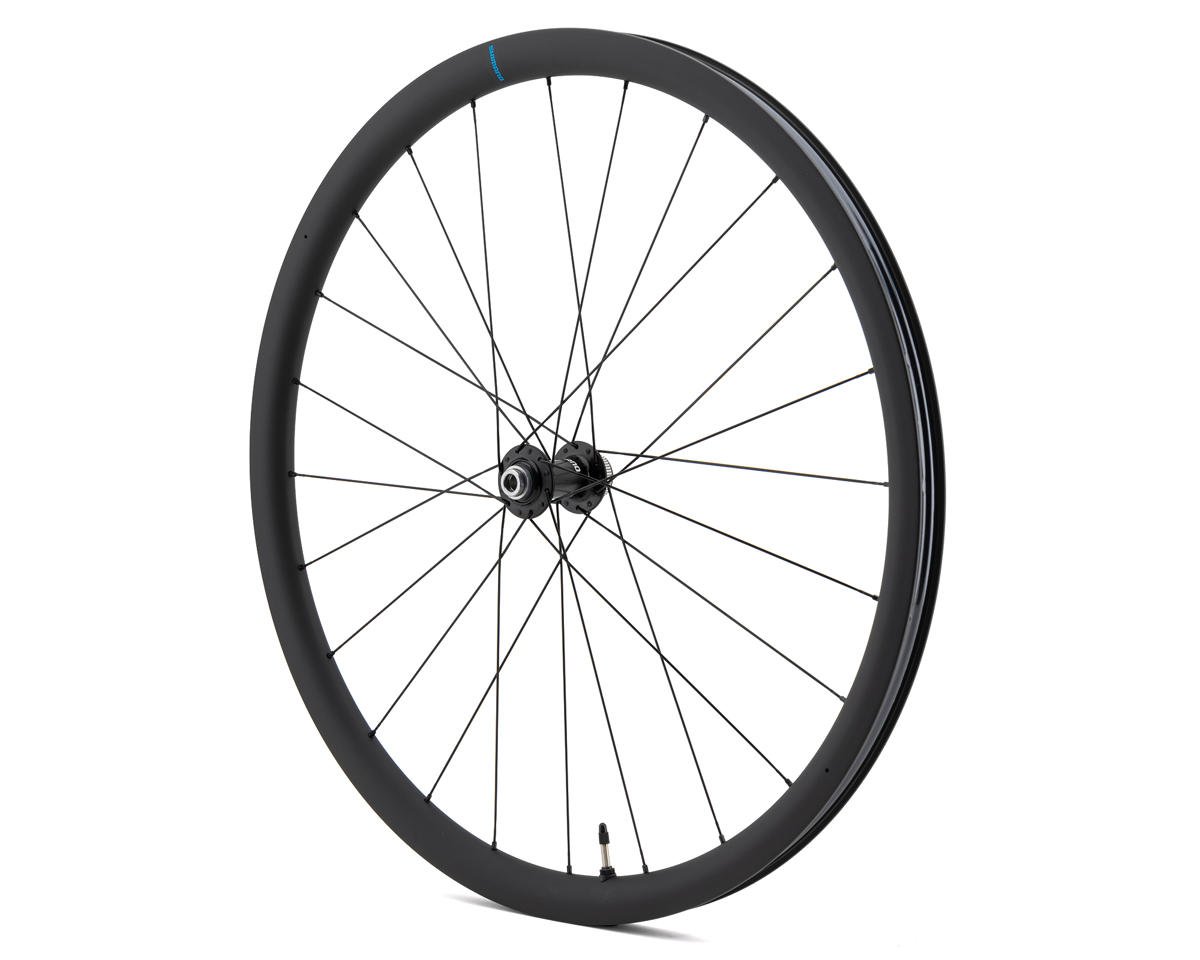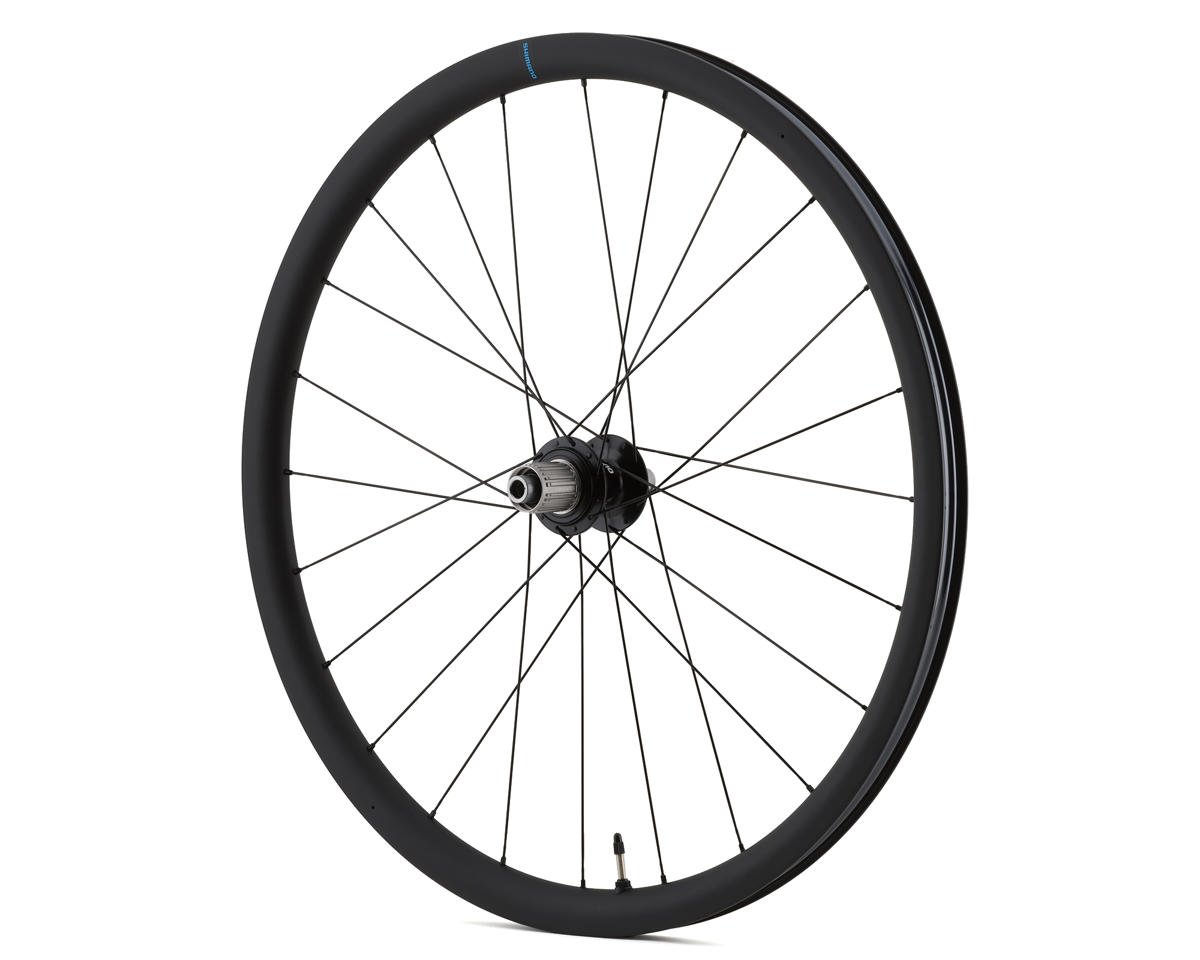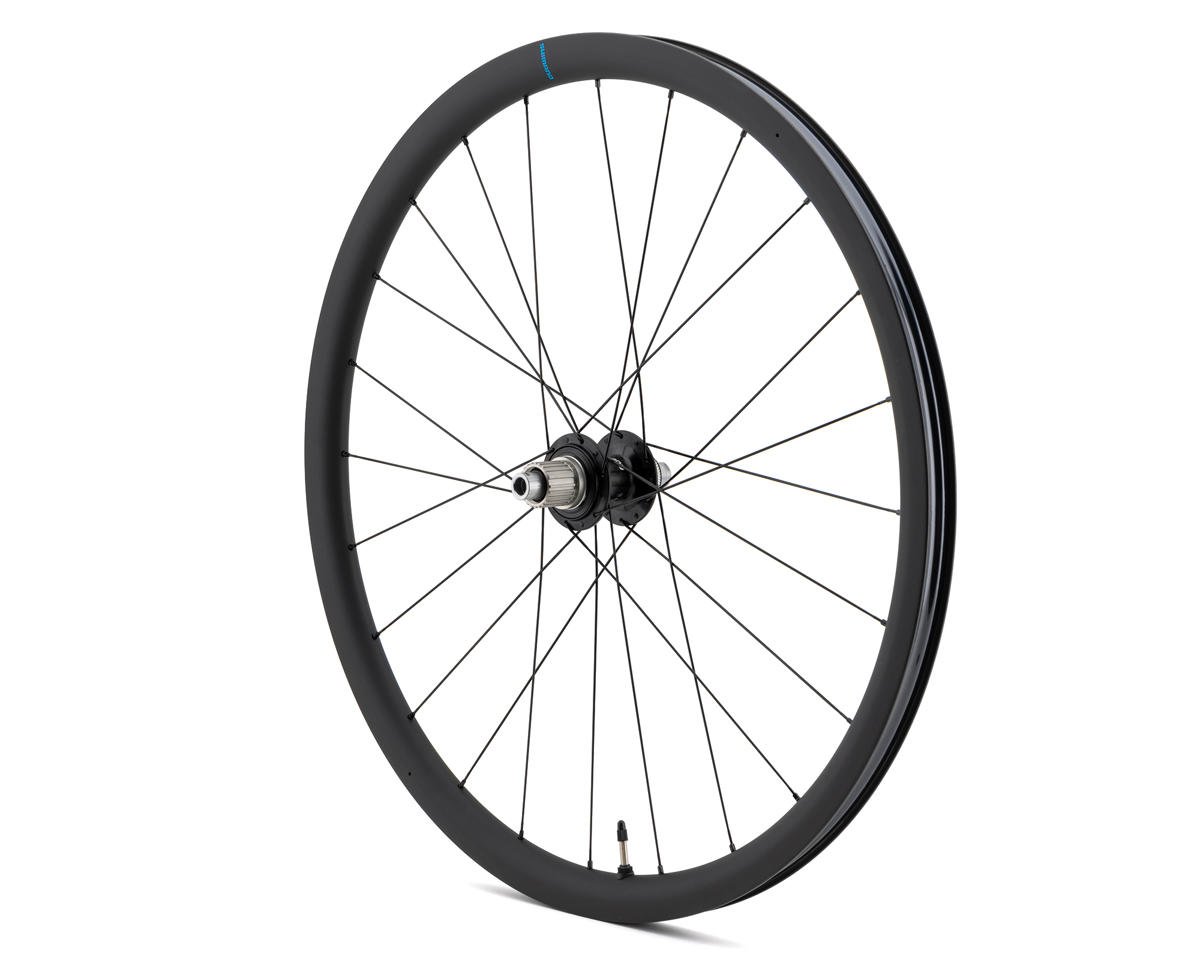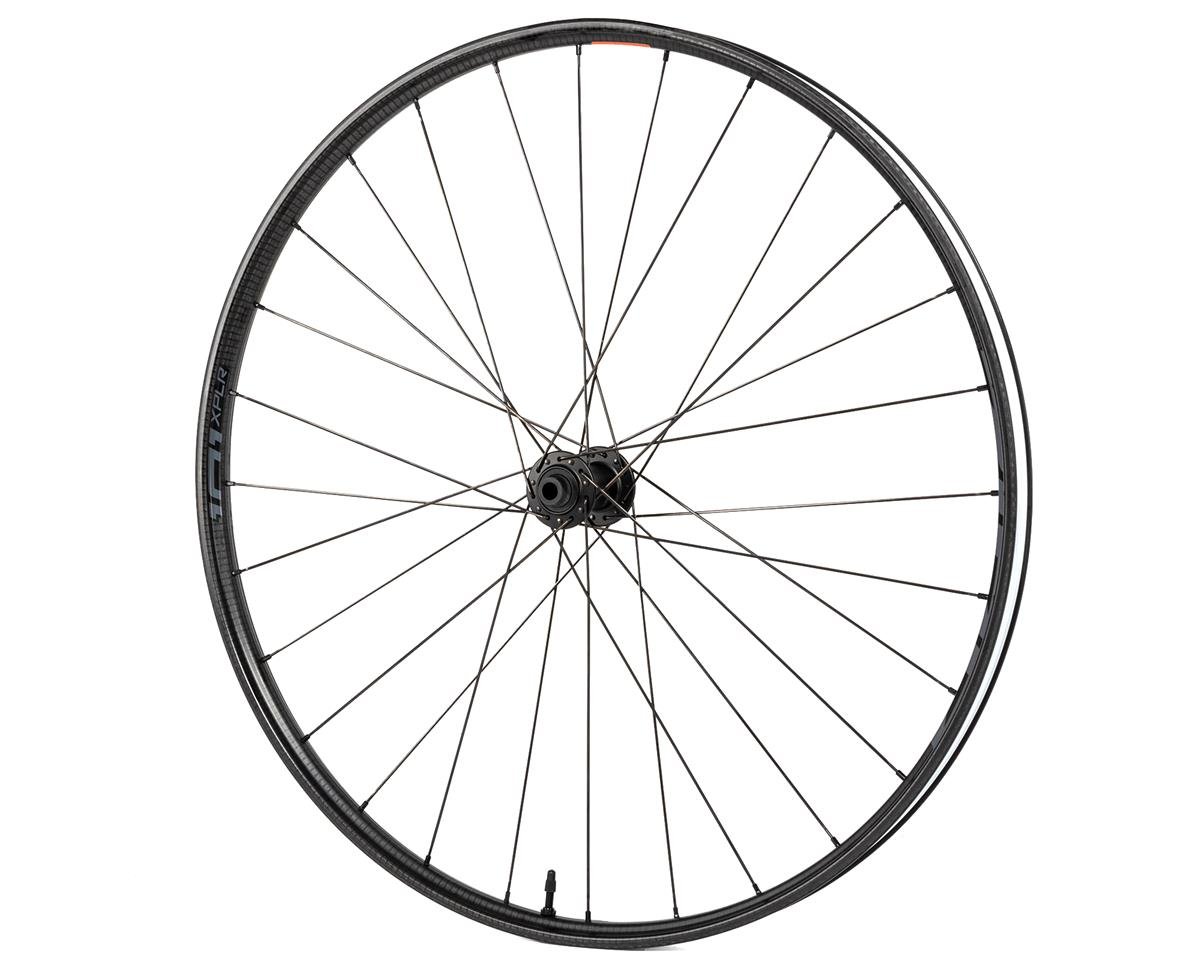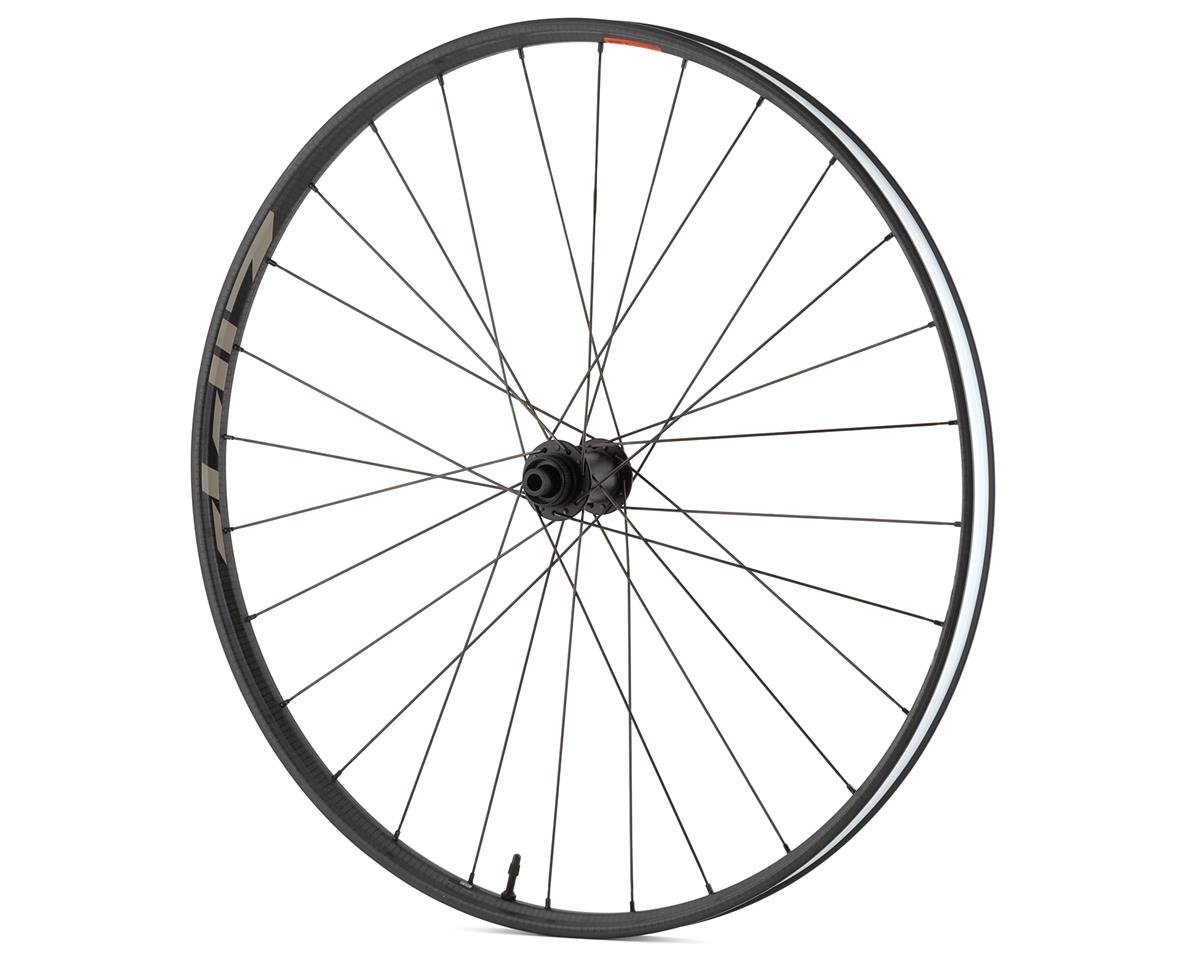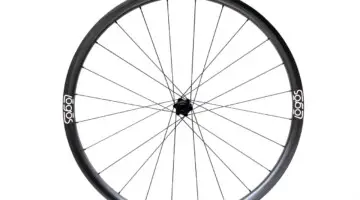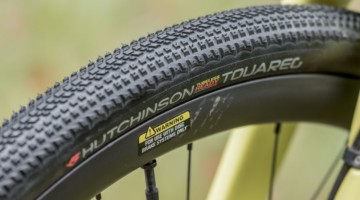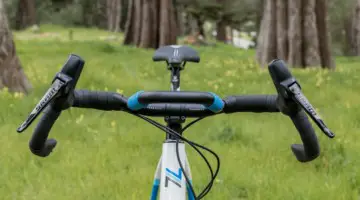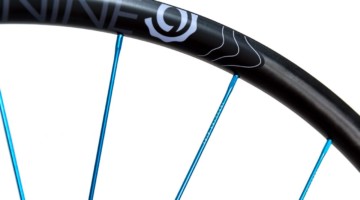How can Industry Nine produce handbuilt wheels with house-made components in Asheville, North Carolina for only $765 USD?
Industry Nine 1/1 GRCX
Industry Nine has a reputation for its excellent selection of hubs completely made in-house. We recently reviewed the UL240 TRA wheels. I liked them so much I bought the review set.
The 1/1 GRCX is certainly a heavier wheelset-1773 grams- with aluminum rims, standard j-bend Sapim spokes, and only one color choice. Wheel weight includes rim tape and installed valves. Valve stem and nut weight is 8 grams and rim tape is approximately 7 grams per wheel, so for comparison sake, the wheelset weight is 1743 grams.
The 1/1 GRCX rim is 24mm wide internally (28.5mm externally), and 22mm deep. The profile is similar to the UL CX we reviewed many years ago, now called the UL 250, but it is not the same extrusion. The 1/1 GRCX claimed rim weight is 455 grams, the UL 250 rim is 55 grams lighter: 400 grams according to Industry Nine. The 1/1 GRCX’s stout build with 28 Sapim Race 2.0/1.8 db spokes x3 front and rear strays from the 2:1 lacing seen with Industry Nine’s premium wheelsets, and contributes to wheel weight, but also to the Clydesdale 260 pound rider weight limit, and likely ultimate durability.
Industry Nine machines the 1/1 hubs in house. According to Isaac Presson from Industry Nine, “The 1/1 hubs require appreciably less machining than our system hubs.” The high-end TRA wheels with Industry Nine’s alloy spokes not only have intricately detailed hubs, but the proprietary alloy spokes made in-house are “both time-intensive and labor-intensive. It takes 60 seconds to machine a single alloy spoke”, according to Presson. The hub engagement system of the 1/1 hubs is similar to that of the Torch: 6 pawls in two phases of 3 pawls each engaging with a 45 tooth drive ring that gives the hubs 4 degrees of engagement. Changes from the Torch hubs include a larger pawl pocket to decrease the chances of a single pawl engagement, and larger bearings to withstand torque applied to the hubs.
Presently, the Industry Nine 1/1 GRCX wheels are a made-to-order product, partly due to the high demand. Industry Nine has plans to have the 1/1 GRCX wheels available as a stock item in the future.
Our review set came out of the box round and true as expected with a well-made handbuilt wheelset. Spoke tension is even on both wheels for each given side. Since the wheels have tape and valves installed, I simply mounted tires of choice (in this case a Hutchinson Touareg 40mm on the rear and a WTB Raddler 40mm on the front) without incident. Both tires snapped on using a standard floor pump. Perhaps a testament to good tire design, rim design, and compatibility. Both these tires held air without sealant but a douse of sealant to each for completeness sealed the deal. I deflated the tires the next day to see if the bead stayed on the shelf—no problem for either tire. A tire bead that unseats when deflated can be a problem in the field.
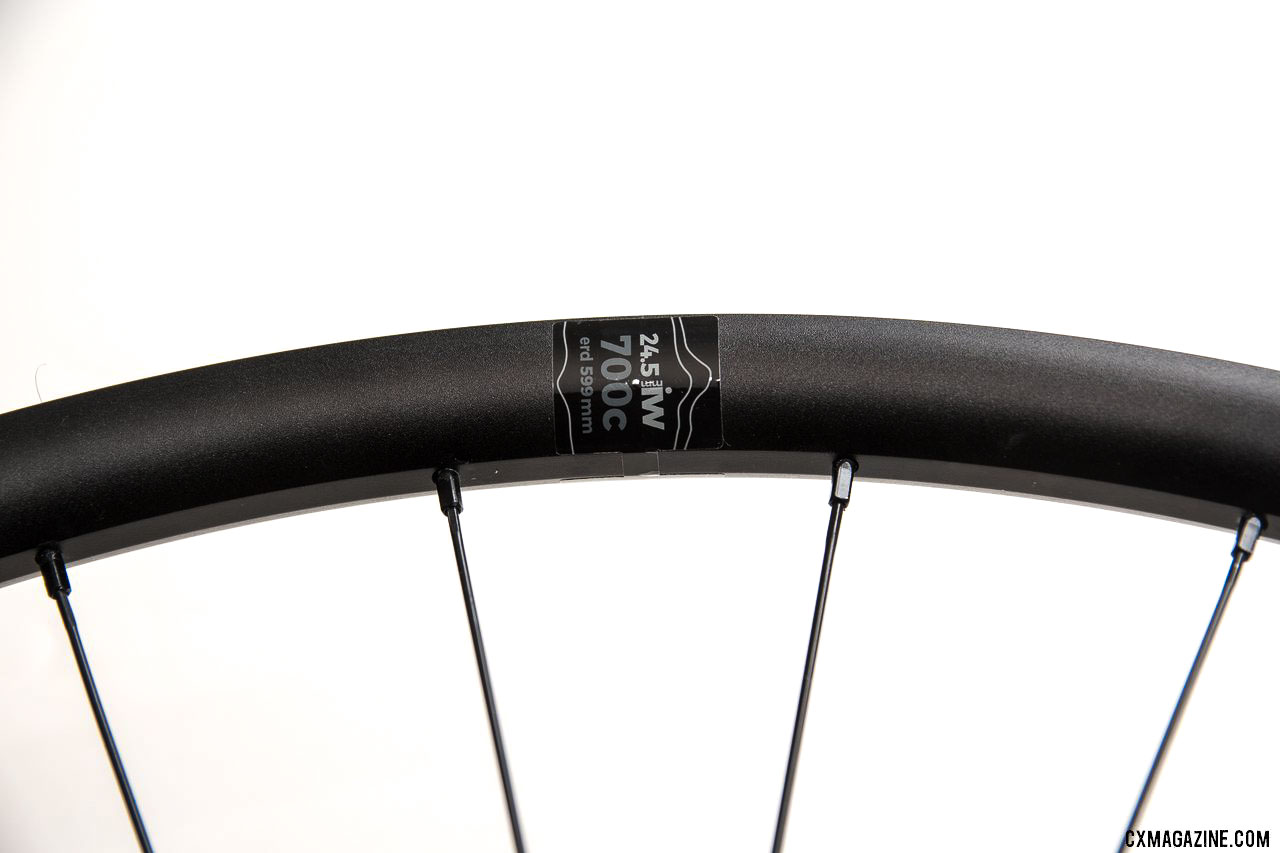
The stout aluminum rim of the Industry Nine 1/1 wheels has a 24.5mm internal width. External nipples for easy maintenance. © C.Lee/Cyclocross Magazine
I already mentioned the 1/1 GRCX is a mid-weight wheelset with a durable build. The front wheel weighs 815 grams including the tape and valve stem, so we can extrapolate that down to 800 grams. The rear wheel is 963 grams, which extrapolates to 948 grams. Considering I was riding with 500-gram tires front and rear, 100 grams more or less compared to a competing wheelset will likely not make much difference to ride performance. More than 100 grams and I think it will be noticeable.
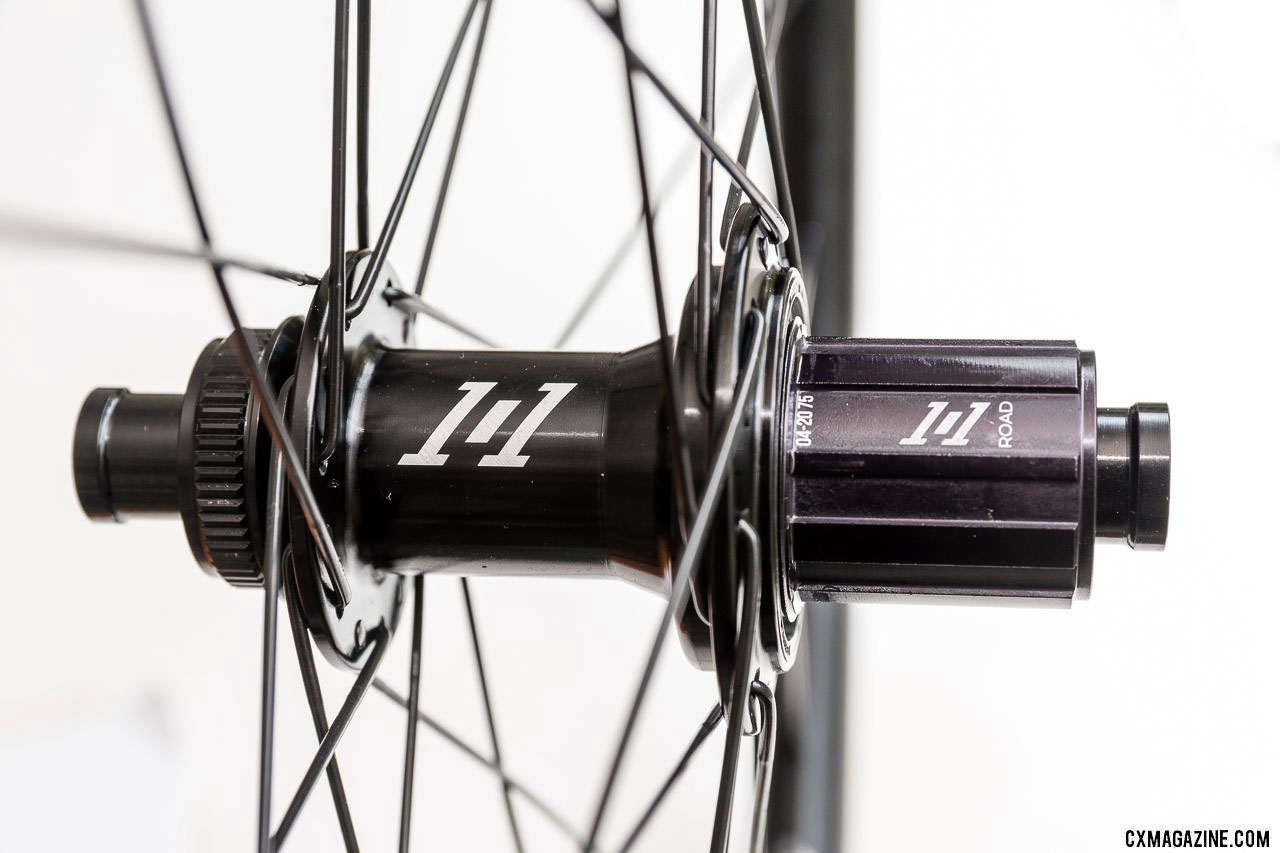
The 1/1 hub is machined in-house and has some internal improvements compared to the Industry Nine Torch hubs © C.Lee/Cyclocross Magazine
The first ride assessment will let you know if the spokes are properly stressed and seated, and if major design flaws exist. The latter is rare, and mostly comes from odd spoke patterns or superlight builds that immediately affect wheel stability. The 1/1 GRCX has none of that, and so is well behaved in corners and when climbing and sprinting. Tire choice and air pressure affect the latter characteristics, but all else being equal, these are neither sprightly nor boat anchors.
Our test rides are frequently in the underbiking category, pushing the limit of where a ‘cross or gravel bike should go. Rocks and roots, small hard pack steps and mini drops are all part of the mix. Of course, a faster cyclocross course with a mixture of dirt, grass, sand, and pavement is also de rigueur.
The rim width is optimum for a wider 700C tire, 35mm or more to offer rim protection and reduced chances of unseating or burping the tire. I did mount a Specialized Trigger marked 700X38C that measured 40mm but weighs 50 grams less than the two aforementioned tires for a short portion of the initial review until I cut the tread. So, all initial rides were on 40mm tires, which I’ve come to like for warm, dry early season cyclocross here in Northern California anyway.
There are no durability concerns so far. No spoke tension change with 1000 miles on the wheels, no change to trueness or roundness. Even with the rough riding that occasionally bottomed the tires, cut the Trigger, and burped the Raddler (it did not unseat), I did not dent the rims. In the past review of the ULCX in 2014, a much lighter rim extrusion with a 2:1 spoke pattern, I did dent the rim using a narrower-than-recommended 33mm tire that offered minimal rim protection. There was no loss of air, and the wheel did not go out of true at all. I would expect more resistance to dents from the stout 1/1 GRCX with a heavier rim extrusion and a higher spoke count.
On the CX course, the 1/1 GRCX is not the race wheelset that the UL 240 TRA set is. The 1/1 GRCX does not steer or accelerate as readily as the UL 240 wheels. However, there is a 400-gram difference and I have a set of Ritchey megabyte 700 X 38 C tires that save another 100 grams total over the Touareg/Raddler40 combination. That’s over a pound of weight savings, yielding an expected result. All that said, throwing the 1/1 GRCX wheel into turns feels confident and the stout rim invites me to bomb a trail or fire road without fear of cracking or even denting the rim.
The Verdict
$765 USD for a made-to-order handbuilt-in-the-USA wheelset, with made-in North Carolina hubs that have a very thoughtful design, is a bargain. There are lighter wheelsets out there for a similar price, (the Hunt 35 X-Wide comes to mind) but the Industry Nine 1/1 GRCX ticks all the boxes for value. Time will tell, but with the specification, design and build quality, I would expect these to outlast my bike.
Industry Nine 1/1 GRCX Specs
Price: $765 USD/ pair
Weight: 1773 grams (tested); front: 800 grams with tape and valve stem, 715 grams without (approximately), rear: 963 grams with tape and valve, 948 grams without (approximately)
Hubs: Front: 1/1 hub, center lock, rear: 1/1 hub, center lock. 6 pawls, 2 phases, 45T drive ring. 4 degrees engagement
Spokes: Front: S28 Sapim race 2.0/1.8/2.0 spokes, X3, rear: 28 Sapim Race 2.0/1.8/2.0 spokes, X3
More info: Industrynine.com













